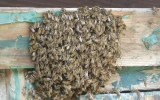Bee Swarming Signs: What Behavior to Look For & Ignore
As a result of the successful raising of larvae and the emergence of worker bees, a bee colony will eventually grow and become congested. This calls for swarming. Bee swarms are often nothing to be concerned about. Despite this, it's helpful to be aware of the swarm warning indicators.
The swarming signs you need to look out for are a surplus of food stored such as nectar, pollen, and honey in the hive, not much comb room for raising brood, building queen cell cups that are capped on the edges of the combs, a large number of bees as well as and capped and uncapped brood drone cells.
It's difficult to predict when a swarm will arise if you're not a beekeeper. The majority of pre-swarm signals take place within the hive. In this article, you'll learn about the signs to look for when your bees are planning to swarm, how to know they have swarmed, and if it's okay to let them swarm.
Summary
- Signs of bee swarming should not be ignored. As a beekeeper, you should have a proper hive inspection to look for signs and act on them quickly.
- You can split the hive that's on the verge of swarming, and either keep it in a new hive, or sell it to interested keepers.
- There are times when bees will still swarm regardless of your efforts.
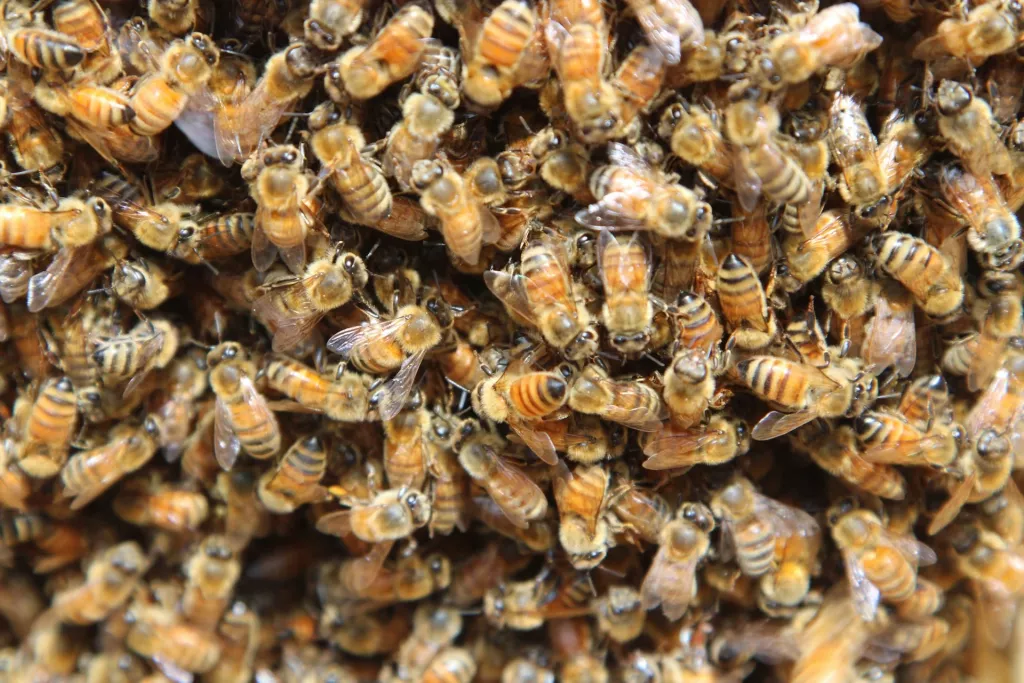
On this page:
Bee Swarming Signs To Look For
Only during warm weather—typically from late spring to early summer—do bees swarm. The swarm will leave the old beehive at a time when it is warmest. Typically, this occurs when the sun reaches its peak in the middle of the day.
A honey bee colony will signal that it is ready to swarm when it outgrows its hive, is too crowded, or is too populous for the queen's pheromones to direct the entire workforce. For the new queens, the workers start constructing swarm cells.
The colony's behavior alters after the swarm cells are built, and the queen puts her eggs there. Foraging declines and the hive's workers start behaving erratically. The queen reduces her weight and stops laying eggs, so she can fly. About half of the workers follow the queen when she leaves the hive, creating a huge cloud of flying bees.
There are several indications that your colony may be getting ready to swarm. These are the warning signs you should be aware of.
Resources abound in brood frames
There is a surplus of food stored in the hive, but there is not much comb room for raising brood. Resources such as nectar, pollen, honey, and capped and uncapped brood abound in brood frames.
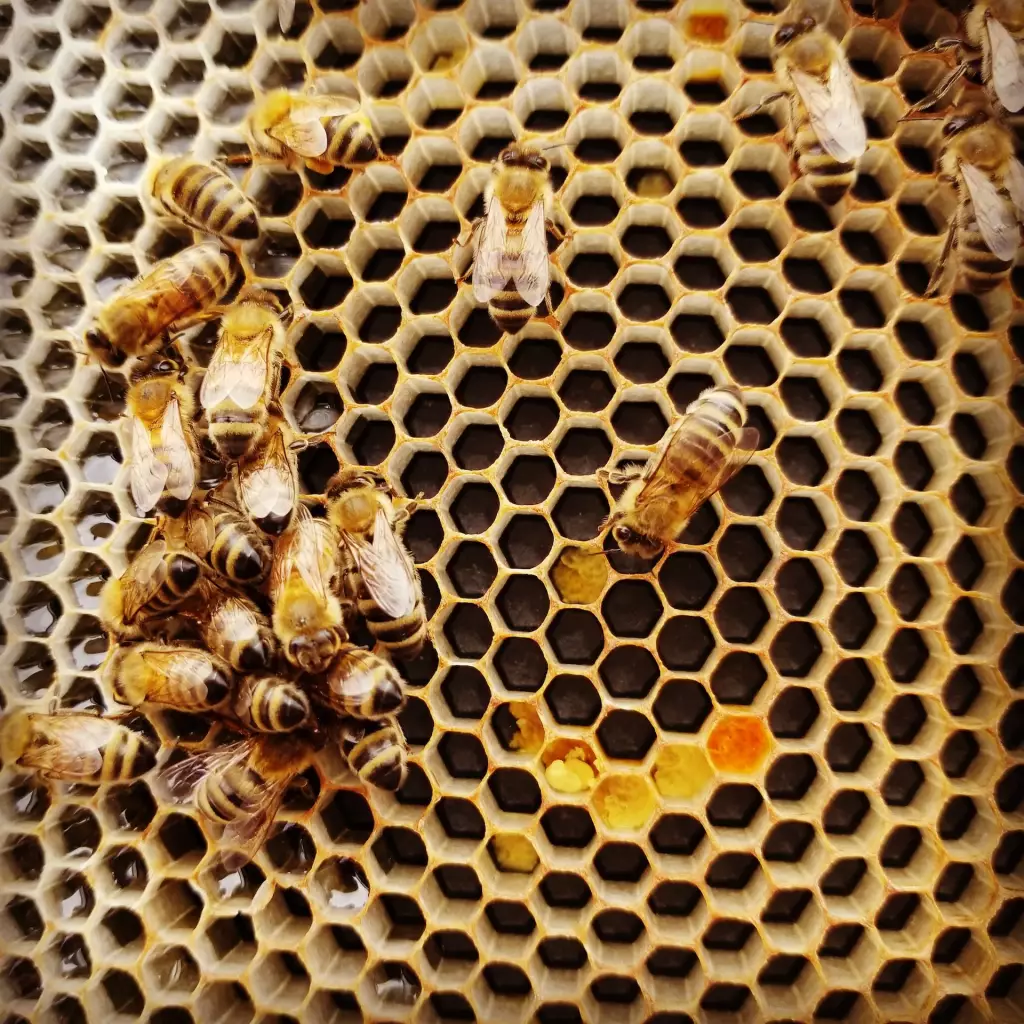
Bees are keeping more honey in and above the brood frames, as well as in any other empty space in the hive. This may cause a colony to get honey logged, which would impair the colony's capacity for brood rearing.
A lot of pollen but little nectar
There is a lot of pollen, but not much nectar in the hive. When they start to backfill emerging brood cells with nectar, bees may be preparing to depart shortly. Another reason for this to occur is that there may not be enough space to accommodate a sudden influx of arriving nectar.
Beekeepers should check to see whether there is still space in their supers for drawn comb and provide additional if necessary. The appearance of cells backfilled with nectar and those of young larvae floating in a pool of brood food is significantly different.
The cells contain larvae that are suspended in their little drips of liquid. This is always regarded as a positive indication that the colony has adequate food sources and healthy nursing bees to provide nourishment for the brood. The quantity required to surround the larvae is very little at this stage because they are still very tiny.
In contrast, cells that are being backfilled with nectar are frequently only half to three-quarters full and have a clearly concave appearance. A colony may act like panicked hoarders as the countdown to a swarm's departure approaches, filling any available space with nectar to tide over the remaining bees until the foraging population has recovered. This is because a swarm departs with a significant portion of the hive's honey stores.
Building queen cell cups
These queen cell cups will be located on the lower and side margins of brood combs and serve as the foundation for queen cells. If your bees are producing queen cells, they might be getting ready to swarm. Look for queen cells at the bottom of frames between boxes.
Queen cups are typically made by bees all season on frames. However, the production of queen cups accelerates in the spring. Additionally, a savvy beekeeper inspects each one to check if there is an egg or a tiny drop of royal jelly.
If you notice that, these are fully developed queen cells rather than queen cups. If at all, removing them will only give you a few days' time to make other arrangements. Sometimes, cutting a little slit in the side with your hive tool will allow you to see down into the bottom of a queen cup more quickly. Using a flashlight can help you see the royal jelly's gleam.
When the queen cell caps contain eggs or larvae, your hive is undoubtedly getting ready to swarm. Your hive could swarm at any time if there are capped queen cells on the lower and side margins of the combs.
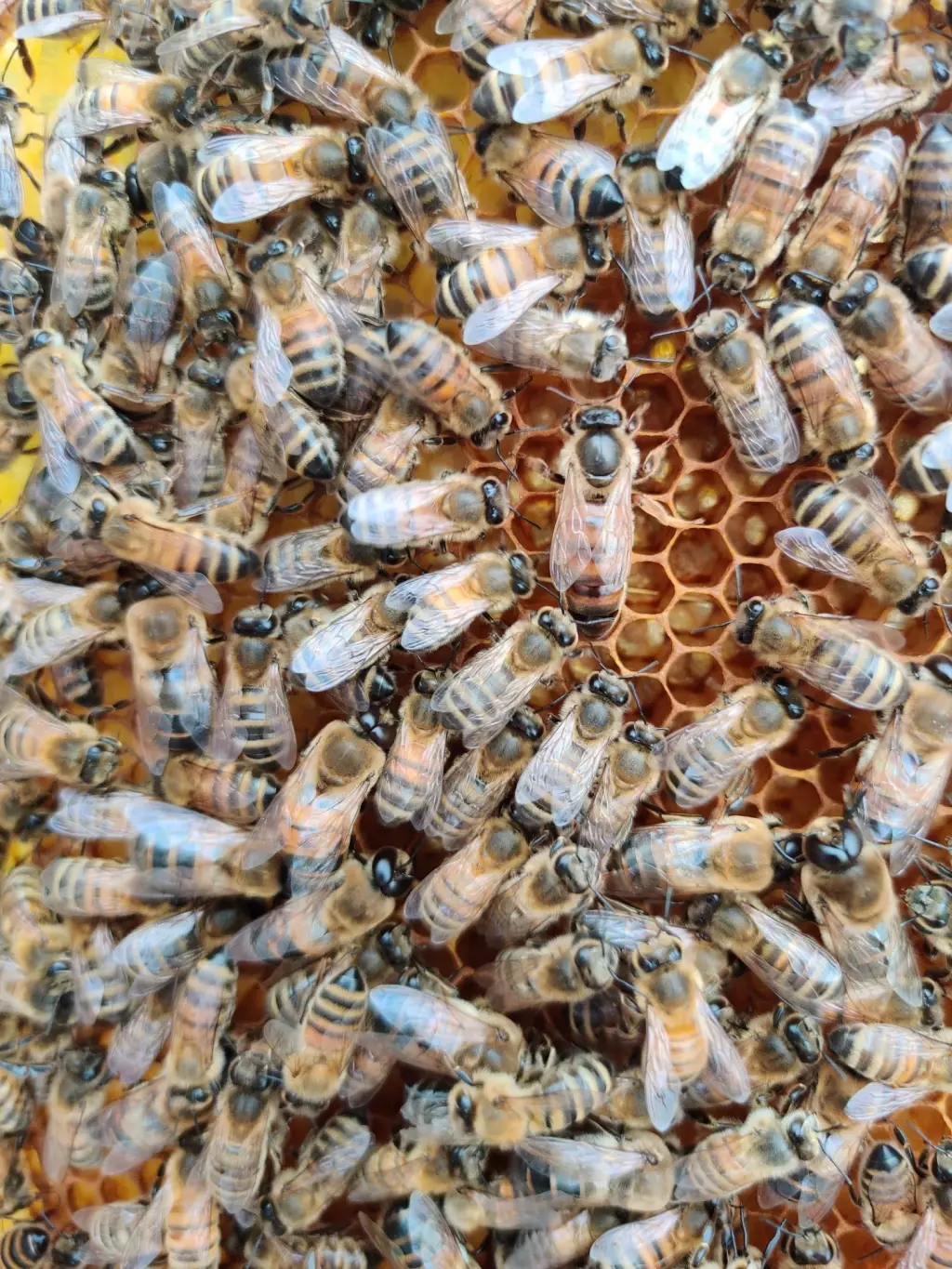
Finally, if your queen is remarkably slim when you see her, she has been losing weight. In order to stop her from producing eggs and to bring her back into flying shape so that she can withstand the swarm flights, her attendant worker bees have put her on a diet and have been hustling her around.
A large number of bees
A hive that is overflowing with worker bees, drones, or "idle" worker bees in the spring is always a strong candidate for swarming.
If you can, add more drawn comb to the supers as well as the brood nest right away. Since it doesn't offer the bees greater capacity for either brood or nectar storage before it has been pulled out, bare foundation rarely has any effect at all in reducing a hive's interest in swarming.
A large number of drone cells
A hive that is producing a large number of drone cells can also be ready to swarm. These may be obtrusively attached to the tops of frames between boxes or the edges of worker frames. In the course of inspections, such items are frequently destroyed. It may still be too early for swarming if none of the hives in your yard are producing drones.
High drone population and signs of drone larvae or capped drone cells. In order to mate with a new queen, drones are made. This further demonstrates the colony's abundance in resources, as they can afford to devote time to the upkeep of drones. Drone bees typically die first when a colony starts to decrease.
How Can I Tell If My Bees Swarmed?
The only way to find out is to carefully inspect the hive. Without such an inspection, there is no way to know. In the fall, the bees are growing and the number of bees in the hive can still appear high after a swarming incident.
Through inspection, you check each frame, shaking the bees into the hive as you go, to prevent the bees from hiding queen cells from you. But don't shake the queen if you see her.
You should schedule hive inspections because if the bees are gone, you need to reduce the number of queen cells to just one attractively open one with a larva inside. If you fail to reduce them, they will cast, and you will lose more bees.
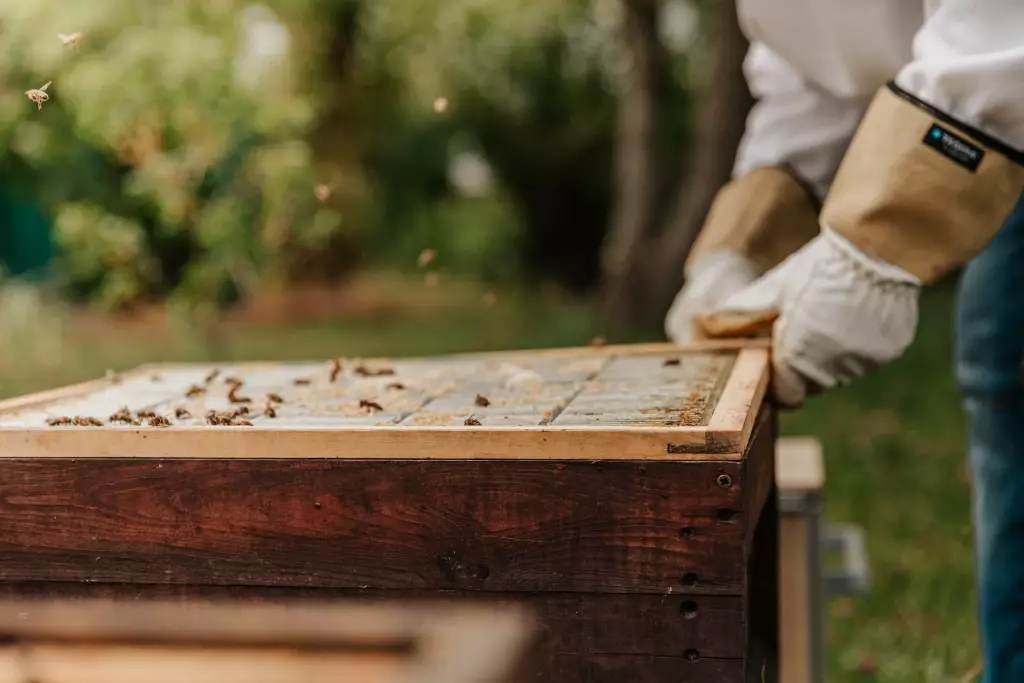
Should I Let My Bees Swarm?
Swarming indicates that the colony is thriving and in good health. Some beekeepers permit their colonies to swarm only because that is what bees naturally do.
Keep in mind that a swarm is beneficial to nature and bee survival. It is undoubtedly a natural procedure and generally a demonstration of their strength.
If you observe any of the signs mentioned in this article, any efforts you have made to prevent the bees to swarm naturally are unlikely to be successful. Additionally, you'll need to act quickly and perform some sort of split to keep your bees in your boxes if you want to maintain them.
If you can, increase the amount of drawn comb in the brood nest and the supers. However, at this point, even more room might not be able to save the day.
